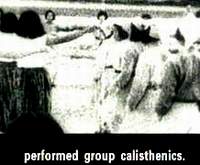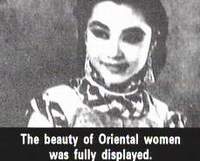 |
|
Songs of Youth (3)
Modern Women |
| CCTV.COM 2002-11-23 10:11:32 |
|
In May 1919, Cai Yuanpei, President of Beijing University, received a letter from Gansu Province. In her letter, a girl by the name of Deng Chunlan applied for admission to Beijing University.
 Her letter was reprinted in many newspapers and periodicals. At the end of the year, Cai Yuanpei told the press definitely that he approved women's applications for entrance to Beijing University. Her letter was reprinted in many newspapers and periodicals. At the end of the year, Cai Yuanpei told the press definitely that he approved women's applications for entrance to Beijing University.
In 1920, the first three girl students were admitted to Beijing University. Their group photo was printed in The Ladies' Journal. From the photo we can find that they had bound feet. The news caused a sensation in society. The Ministry of Education had to send a letter to Beijing University, demanding that it should handle the matter prudently to avoid any malpractice.
For more than ten years following the birth of universities in China, men and women were strictly forbidden to study in the same university.
The first group of schools for girls was set up in China at the end of the 19th century. McTyeire School, a missionary school in Shanghai, enrolled only five girl students at first. Girls left their chambers and went to schools. The fate of Chinese women changed from the childhood of these students. From the old films we can find the mental outlook of vigorous girl students in China at the beginning of the 20th century.
In Beijing in 1908, the Qing government approved the establishment of China's first normal school for girls run by the government. Soon afterwards, more schools for girls were founded across the country.
He Xiangning and Lei Jieqiong were among the modern women who graduated from these schools. After they graduated from schools for girls, the three sisters of the Song family went abroad to carry on their studies. They were outstanding representatives of women in the 20th century.
Established in 1906, Zhou Nan Girls' School attracted girls from Central China. Cai Chang and Xiang Jingyu, veteran revolutionaries, and Ding Ling, a famous writer, graduated from the school. They found jobs or joined the revolutionary ranks. In 1920, they appeared among those going to France for a work-study programme.
Inspired by new ideas, some girl students in the mountain city Chongqing had their hair cut short and disguised themselves as men when they came in and went out of local colleges and universities for men. Their action caused a great stir in the city.
 The school authorities expelled these girl students, explaining that they had violated the feudal ethics and offended public morals. But more and more girls had their hair cut short. The school authorities expelled these girl students, explaining that they had violated the feudal ethics and offended public morals. But more and more girls had their hair cut short.
Receiving education was the first step taken by girls before they became active in society. By 1922, a total of 28 universities and colleges had enrolled girl students. In the first 20 years of the 20th century, career women entered the arena of society. Among them were women shop assistants, textile workers, teachers, telephone operators and actresses. A good many women were busy in various sectors of Chinese society.
In January 1920, The Ladies' Journal published an essay under the title "Views on the Liberation of Servant Girls", questioning the traditional servant girl system in China. In August, the same journal pointed out in an article that social reform was the fundamental way to abolish prostitution and that a basic solution of the problem required the economic independence of women. The powerful public opinion encouraged a change in the fate of Chinese women.
In January 1919, modern dresses became fashionable in Beijing, Shanghai and other large and medium-sized cities. Educated women dressed in high-collar blouses and black skirts could be seen very often in the streets. In those days, Shanghai was leading the fashion of women in China. Fashionable ladies loved to get their hair permed and wear close-fitting dresses, silk stockings and high-heeled shoes. They looked elegant and self-confident. More and more female images, optimistic and natural, appeared in advertisements. The women's struggle for independence and freedom was a theme in China for a century. They began to voice their aspirations during the May 4th Movement.
|
|
Editor: Inner Wu CCTV.com
|
|
|
|
|
|
 |









